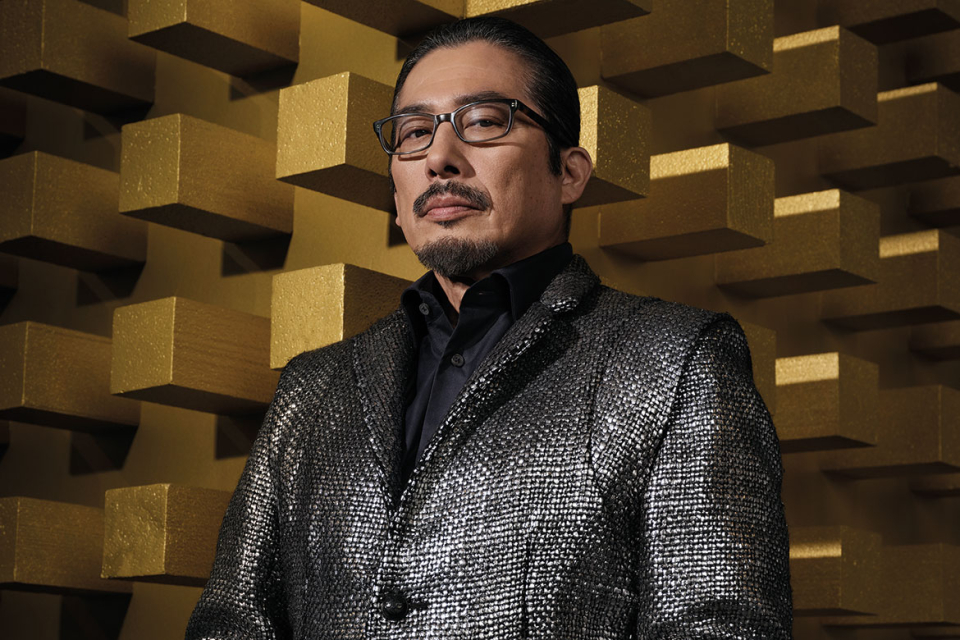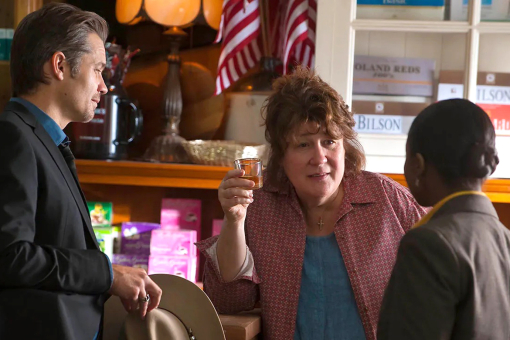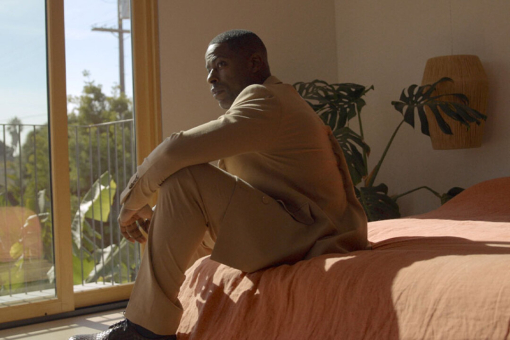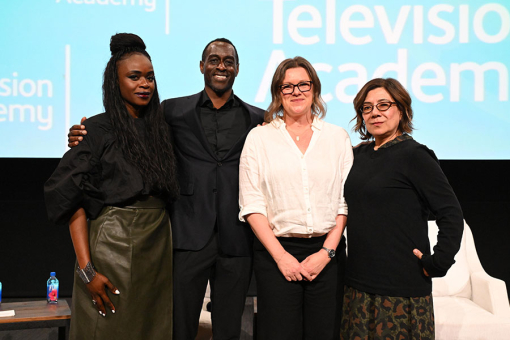When the first TV adaptation of the heroic samurai saga premiered on NBC in 1980, more than 120 million people tuned in — one of every three screens in the United States, enough eyeballs to give the network the highest weekly ratings in its history at the time. What was the big deal? For starters, the source material.
Shōgun is based on the eponymous and wildly popular 1975 James Clavell novel, which chronicles the exploits of an Englishman fighting to survive in 17th-century feudal Japan. Lax censorship was another draw. Highlights included a graphic beheading shot (a network first), nude bathing, interracial sex and a torture scene depicting a man being boiled alive. More than just a ratings bonanza, Shōgun was celebrated by critics as art for art's sake. Nominated for 14 Emmys, it won three, including Outstanding Limited Series.
Now, 44 years later, medieval Japan has been brought to life for a contemporary audience. New episodes of the extravagantly produced, 10-part limited series air weekly on FX and are available to stream on Hulu. When the trailer dropped in November 2023, it ignited the kind of petty disputes social media thrives on. There was outrage, of course, this barb being typical: "Great, another white man telling a Japanese story ... hard pass." But the voices of the misinformed were drowned out by all the likes — and for good reason.
Unlike the NBC adaptation, which focused heavily on the perspective of the Englishman, John Blackthorne, FX's adaptation is filtered primarily through the piercing gaze of the two major Japanese characters: Lord Toranaga (Hiroyuki Sanada), the powerful feudal lord striving to keep peace in his country; and Lady Mariko (Anna Sawai), a disgraced Christian noblewoman who serves as Toranaga's translator and Blackthorne's conflicted love interest.
This time around, Blackthorne (Cosmo Jarvis) is more pawn than protagonist. He moves between Toranaga and Mariko like an electron orbiting a nucleus, always stuck on the outside, never permitted in. Instead of dominating each episode, he shares screentime not just with Sawai and Sanada but with an extensive cast of supporting Japanese actors. The shortlist includes Shinnosuke Abe as Buntaro, Mariko's jealous husband; Tokuma Nishioka as Toda Hiromatsu, Toranaga's trusted general and closest friend; and Moeka Hoshi as Usami Fuji, the grieving widow whom Toranaga orders to be both Blackthorne's "pillowing" (sex) partner and majordomo.
The verisimilitude throughout the production is astonishing. It's not just that every Japanese character is played by a native Japanese actor or that each one speaks in period-correct dialect. As architects and novelists sometimes say, God is in the details. Whether it's the way a samurai traverses a tatami mat (on his knuckles) or the perfectly tied obi knots (there are 100 ways to tie a kimono belt, each with a different meaning), nothing rings false. It's the kind of obsessive work ethic that will mesmerize viewers and frustrate academics looking to find fault.
Period pieces aren't cheap, particularly if the setting happens to be Japan's Sengoku era (1467–1615), otherwise known as the "Warring States Period," a time of political upheaval and bloodshed. Study the credit roll, and it's easy to imagine how the parade of consultants dinged the budget. Just the number of kimono experts must have made the accountants squirm: a specialist, a coordinator, two advisors, a consultant, five textile artists and 13 kimono technicians make the list.
Costume designer Carlos Rosario (The Girl in the Spider's Web, Beirut) shrugs when he hears this. The total numbers are staggering. "I had an international crew of more than 200. I spent 16 months studying Japanese textiles so we could be as accurate as possible about the placement and meaning of each pattern on the fabric," Rosario says. "Before sketching anything, I had to learn the language of the clothing."
FX won't disclose the budget, admitting only that this is its "largest international production to date." Jonathan Penner, a Tribeca Film Festival programmer who attended a Shōgun preview in New York, doesn't doubt that. He estimates production budgets the way an algorithm estimates probabilities: "Shōgun is as big as anything on TV as far as scale and scope. It's a Game of Thrones-sized show, with the same level of VFX, acting, wardrobe and sets. That's only achievable on a tremendous budget and a long shooting schedule."
In fact, the shoot — which took place in Vancouver, British Columbia — clocked in at 183 days. Two camera crews were always operating, and frequently three.
Here's how FX CEO John Landgraf — the industry savant behind the term "Peak TV" — explained such a big swing to The Hollywood Reporter: "There's a whole lot of point of view that was omitted from the original series because it was thought at that time that American audiences wouldn't want to see the story from the Japanese point of view. Now, I think you have to tell the story from the Japanese as well as Western point of view."
Translation: The stranger-in-a-strange-land plot archetype hasn't aged well. We don't need another Caucasian-versus-"barbarians" series. We need a Shōgun for the 21st century. A Shōgun that explores Japanese culture and traditions, a show anchored by native people rather than an interloper — that's the smart bet. Not to placate or satisfy DEIA, international markets or awards eligibility, but because it's just better storytelling to write a narrative arc and characters that intrigue and challenge viewers.
According to James Clavell's daughter, Michaela Clavell, who served as an executive producer on the series, it was Landgraf's respect for the original source material that sealed the FX deal. "This is a modern Shōgun for a modern audience," she says matter-of-factly. "There are so many things you couldn't do on [broadcast] network TV in 1980 that you can do on platforms today: the budget, technical advisors, special effects. This series is so impressive, and it's done the way my father would have approved of."
Cosmo Jarvis (Lady Macbeth, Persuasion), the indie leading man whom i-D magazine dubbed "Britain's new Brando," is content to cede the spotlight to his two costars, particularly Hiroyuki Sanada, the veteran action star known as "Hiro."
When it's suggested that Shōgun is Sanada's show, Jarvis nods in agreement. "Absolutely," he says in the kind of earnest tone that convinces you he really believes that platitude about there being no small parts, only small actors.
Indeed, Jarvis gives the impression that he would have passed if the Englishman had been the linchpin of the series. "Blackthorne is subservient for a good portion of the story," he says. "I found that pretty interesting because the intricacies of Japanese culture — the power struggles, the spiritual structures — must be defined in the story, and Blackthorne's role must also be limited to service that story."
He distills it down to this: "This is a man from a different culture who is very much a guest in their world."
The Brando label has as much to do with Jarvis's dramatic roles, where he vacillates between being vulnerable and dangerous (see: Calm with Horses), as it does with his method-actor reputation.
Although Jarvis claims no devotion to Stanislavski or Meisner, Anna Sawai is dubious. "During the entire sixmonth shoot, he never broke character. Cosmo says he's not method? He's so method."
The screen voice he came up with sounds like Richard Burton doing Hamlet on the West End, with an eerily similar resonance, cadence and diction. "People have mentioned that," he admits. "I wanted Blackthorne to reek of England, especially the voice." When he talks to Toranaga about establishing trade with the Dutch or with Mariko about how it's better to embrace life than to commit seppuku, Jarvis's strong baritone blasts through the soundbar the same way trained theatrical voices do onstage.
Sawai insists she's "not method at all" — she attended classes at the Avex Artist Academy's music agency. The Tokyo-based entertainment company specializes in launching J-pop acts like FAKY, the highly choreographed girl group Sawai fronted for several years.
While under contract, she immersed herself in Avex's grueling talent development program, commonly referred to as "J-pop boot camp." In addition to singing and dancing lessons, she also attended acting classes. But her real focus was on "Action Training" — a combination of gymnastics, pumping iron and martial arts — learned at Takase Dojo. That highly marketable skill set landed her minor roles in films like Ninja Assassin and F9: The Fast Saga. More recently she starred in Monarch: Legacy of Monsters on Apple TV+.
She admits the action training came in handy (a pivotal Shōgun scene showcases her naginata fighting skills), but Sawai says what really excited her was the opportunity to flex her acting chops. Her character research included reading history, practicing calligraphy and studying original letters written by Hosokawa Gracia, a member of the aristocratic family that the Mariko role is based on. "I practiced writing in Japanese, just like Lady Gracia did. You won't see it in the final cut, but it helped me get in touch with the character."
It's an impressive performance. When Sawai is onscreen you buy everything: her absolute loyalty to Toranaga, her unwavering Christian faith, the sexual tension between her and Blackthorne. It all seems so ... method. Consider this: Just before shooting the scene with the actor who played her father, she was overcome with emotion. "That was such a weird feeling, it wasn't like meeting another actor," she recalls. "It was like actually meeting Gracia's father. I started crying because the character was so deep inside me that the actor I was talking to really felt like the father that I had lost."
To read the rest of the story, pick up a copy of emmy magazine here.
This article originally appeared in its entirety in emmy magazine Issue #02, 2024, under the title, "Modern Classic"















